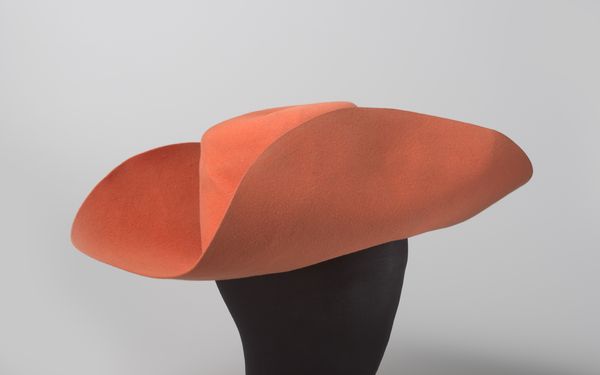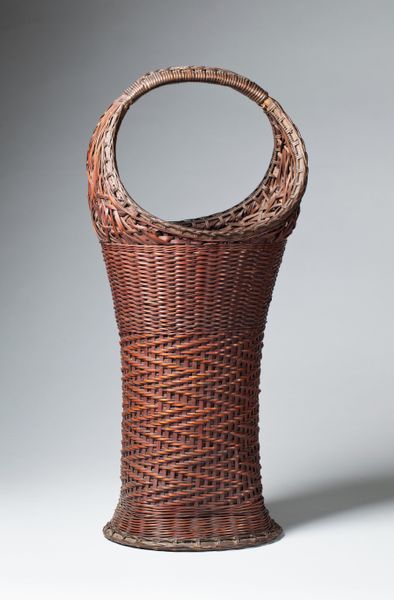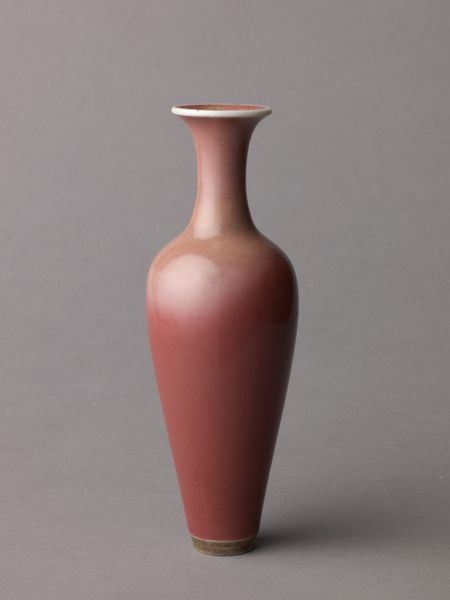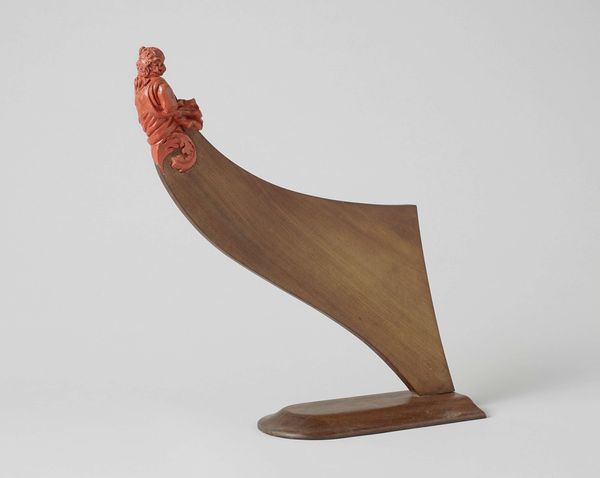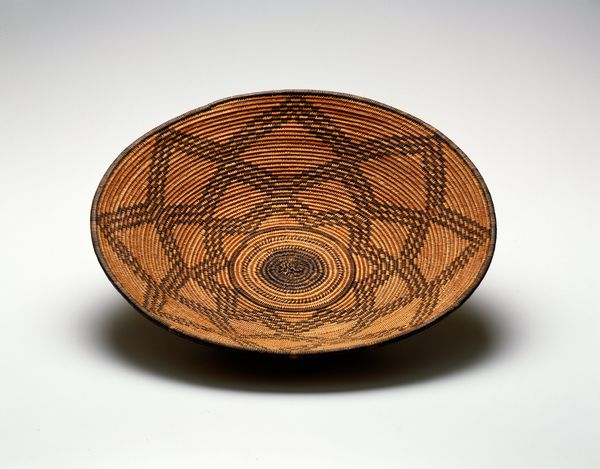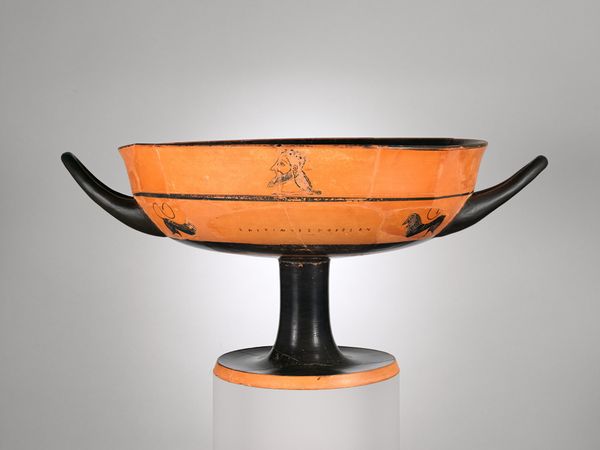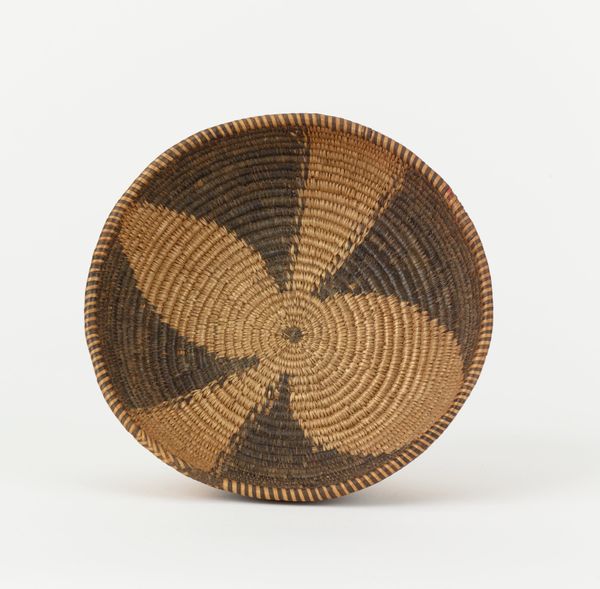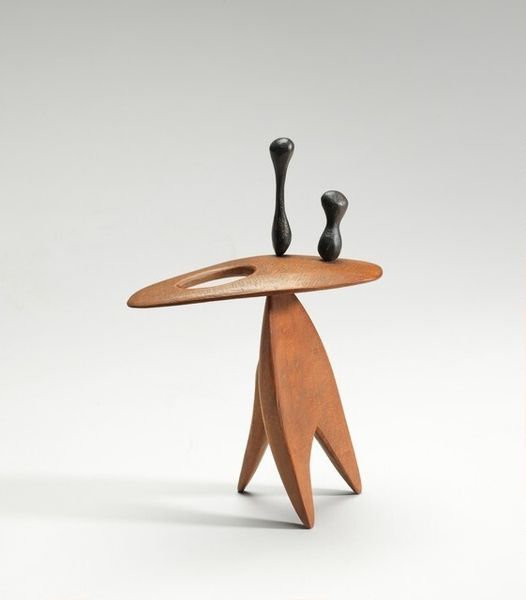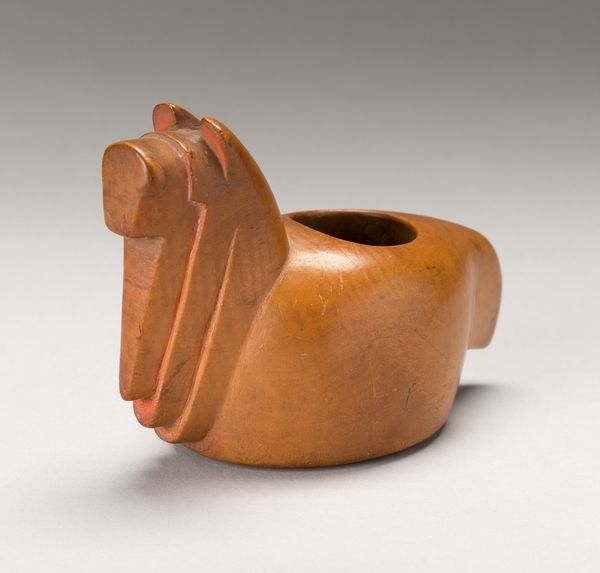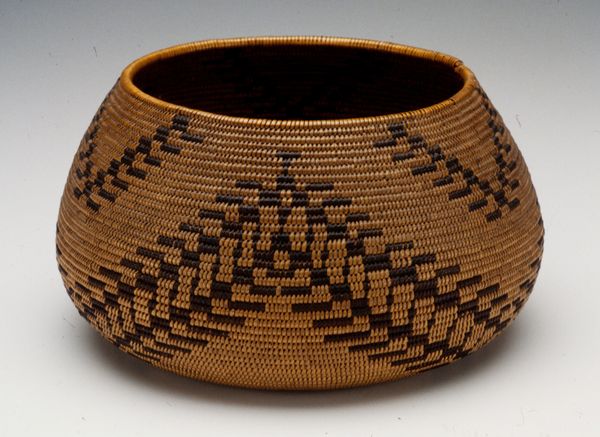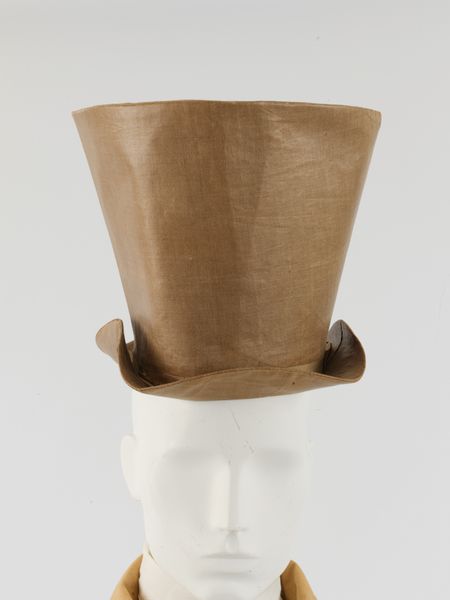
fibre-art, textile, sculpture
#
fibre-art
#
textile
#
form
#
geometric
#
sculpture
#
ceramic
Dimensions: 5 1/4 x 16 in. (13.34 x 40.64 cm)
Copyright: Public Domain
Curator: Here we have an object identified as "Woman’s Hat", believed to have been crafted around the 20th century by Zulu artisans. The construction employs fibre-art techniques and showcases a captivating textile medium. Editor: It's arresting. That vivid terracotta color and the way light catches on the concentric weaving lines, giving an almost topographical feel. Is it meant to be sculptural, rather than simply functional? Curator: I believe the boundary between sculpture and functional object blurs here. In Zulu culture, hats worn by women are highly symbolic. Their size, materials, and embellishments often signal a woman's status within her community and family structure. Wearing the hat isn't just about adornment. It is about broadcasting identity and belonging. Editor: Ah, so the formal qualities aren't purely aesthetic. They communicate. This particular hat... the almost architectural flair. And what is that element on top? Almost like a signature or final stroke. Curator: Yes, consider how gendered clothing throughout history becomes not just an object of design, but a canvas for expressing social stratification. The labour involved is also vital. Who made this hat and under what circumstances? Knowing whether it was woven by the wearer themselves, by a relative, or purchased, would impact its potential reading within historical systems of power. Editor: I agree that these questions of craft and agency matter deeply. It invites considerations about tradition versus modernity too. How do contemporary artisans negotiate the powerful symbolic weight of ancestral forms? Does the impulse shift from rigid social encoding towards individual expression? Curator: That's insightful. In addition to reflecting status, such hats, through their craftsmanship, act as emblems of cultural endurance against displacement, inviting new approaches to art making that reflect lived experience while referencing tradition. The artist’s skillful application of geometric form reinforces these symbolic qualities. Editor: To circle back to my first impression: there's also something inherently pleasing, even soothing, in the repetition of these concentric lines and in that fiery earth tone, wouldn't you agree? Curator: Absolutely. These elements amplify cultural values but can be enjoyed visually outside of any socio-political context. Editor: A thought-provoking intersection between symbol and sheer form. Curator: A powerful intersection indeed, speaking volumes about resilience and tradition.
Comments
minneapolisinstituteofart almost 2 years ago
⋮
In the early nineteenth century, married Zulu women commonly styled their hair by shaving their heads to leave only a cone-shaped topknot at the crown and coloring it red. A wide circular headdress, known as isicholo, replaced this hairstyle in the late nineteenth century. In many areas, Zulu women continue to wear it as a sign of their married status at special events and ceremonies. The isicholo is constructed using a basketry frame, which is covered with string or yarn to produce the dense texture. The hat is then dyed with a mixture of ochre and fat. A century ago, these hats were made with grass fibers and human hair.
Join the conversation
Join millions of artists and users on Artera today and experience the ultimate creative platform.
